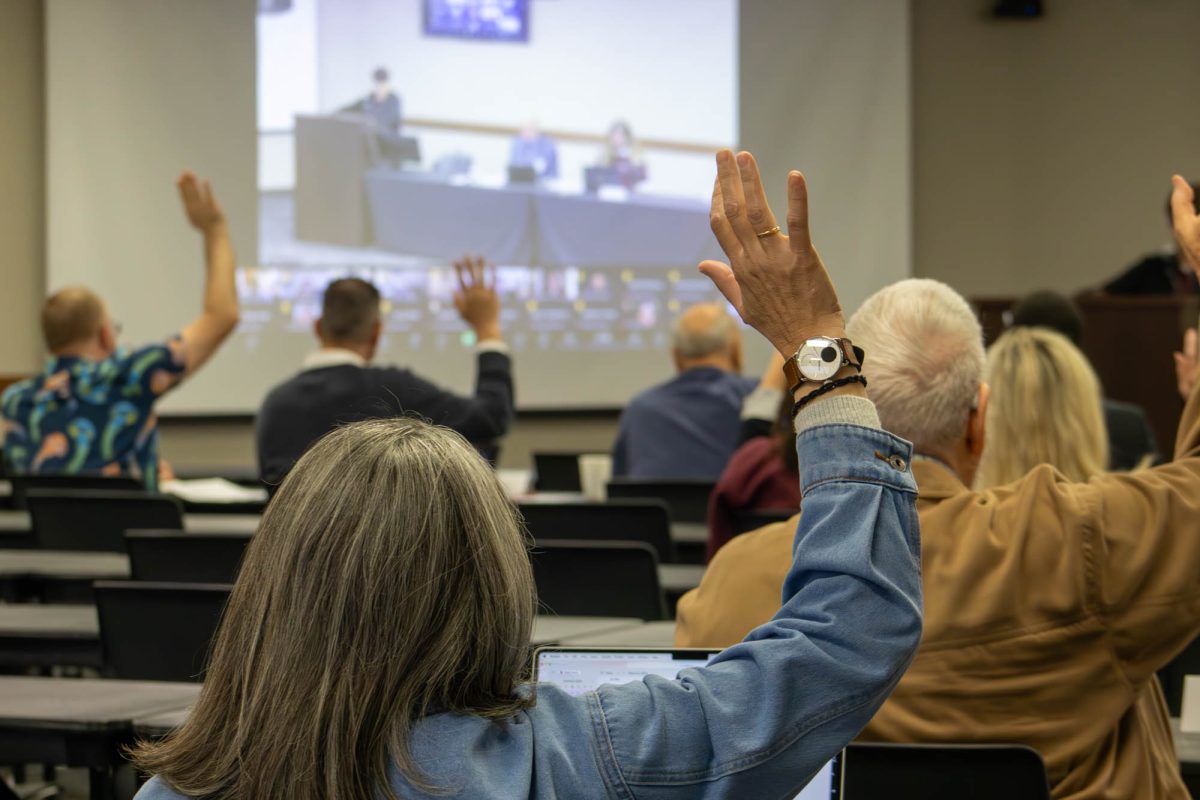More than 500 participants flocked to Rudder Tower Friday to participate in TAMUHack, which gave contestants 28 hours for a deceptively simple task — create anything, and win prizes ranging from T-shirts to iPads and computers.
An Internet plug-in called “Google FFITI” that allows users to write and share “graffiti” notes across webpages took first place. Members of TAMUHack hope the momentum gained from its first A&M hackathon can carry into a bigger and better event next year.
Chris Nolan, computer engineering junior and organizer of the event, said there are many different ways to do well at a hackathon.
“The main three things we are looking for is technical difficulty, polish and creativity, and that will get you in the top 10,” Nolan said. “Teams also have a chance of winning company-specific prizes — each company can give out their own specific prize, and they don’t have to follow our scale.”
Samantha Darling, a pychology senior with no programming experience, said she was pleased with her team’s final product — software that uses Microsoft Kinect sensors to allow DJs to interact with their music without touching a turntable.
“We went from wanting to do financial graph stuff, but we ended up picking this thinking it would be more fun, and I got to be a part of it,” Darling said.
Devan Huapaya, computer engineering senior and member of the 3rd-place team, said his project, an Oculus Rift game, came together at the last minute.
“We were all on different teams and then at about 6 a.m. all of our projects were kind of fading, so I met up with Jose and we both kind of started talking,” Huapaya said. “We got super hyped at 6 a.m. — 12 hours, built this thing, and it kind of works.”
Christopher Findeisen, junior computer science major and a member of the first-place team, helped design Google FFITI. Findeisen said his project was a blast to create and he enjoyed meeting and working with his teammates.
Tracy Hammond, faculty sponsor for TAMUHack, said a hackathon is a unique, beneficial experience.
“The nice thing about a hackathon as opposed to, say, a programming contest, is that there is no direct problem they are trying to solve,” Hammond said. “They get to be creative and think of their own problem. And a lot of times the students who work on these problems are recruited by different industry people who are participating in the hackathon.”
Eleni Mijalis, biology junior and organizer of the event, said a hackathon is important because it gives participants a chance to apply knowledge in a creative environment.
“Basically it brings computer scientists from around the world together to learn the skills you don’t learn in the classroom setting,” Mijalis said. “Classroom skillsets are great, but to put them to practical use you need to solve real-world problems, and that’s what hackathons do.”
Mijalis said TAMUhack plans to expand the on-campus hackathon next year. Members hope to move the venue from Rudder Tower to the MSC ballroom in order to house all the participants in one room and to give better space for corporate sponsors.
Mijalis said hackathon is an amazing experience and encouraged everyone to attend.
“Everything that a hackathon can give, when you actually come it just becomes so much more than a hackathon,” Mijalis said. “It’s friendships, connections, internships and jobs. It’s going to turn into something that can change your life and change the world.”
TAMUHack pushes students to solve ‘real-world problems’
October 26, 2014
0
Donate to The Battalion
$2790
$5000
Contributed
Our Goal
Your donation will support the student journalists of Texas A&M University - College Station. Your contribution will allow us to purchase equipment and cover our annual website hosting costs, in addition to paying freelance staffers for their work, travel costs for coverage and more!
More to Discover








